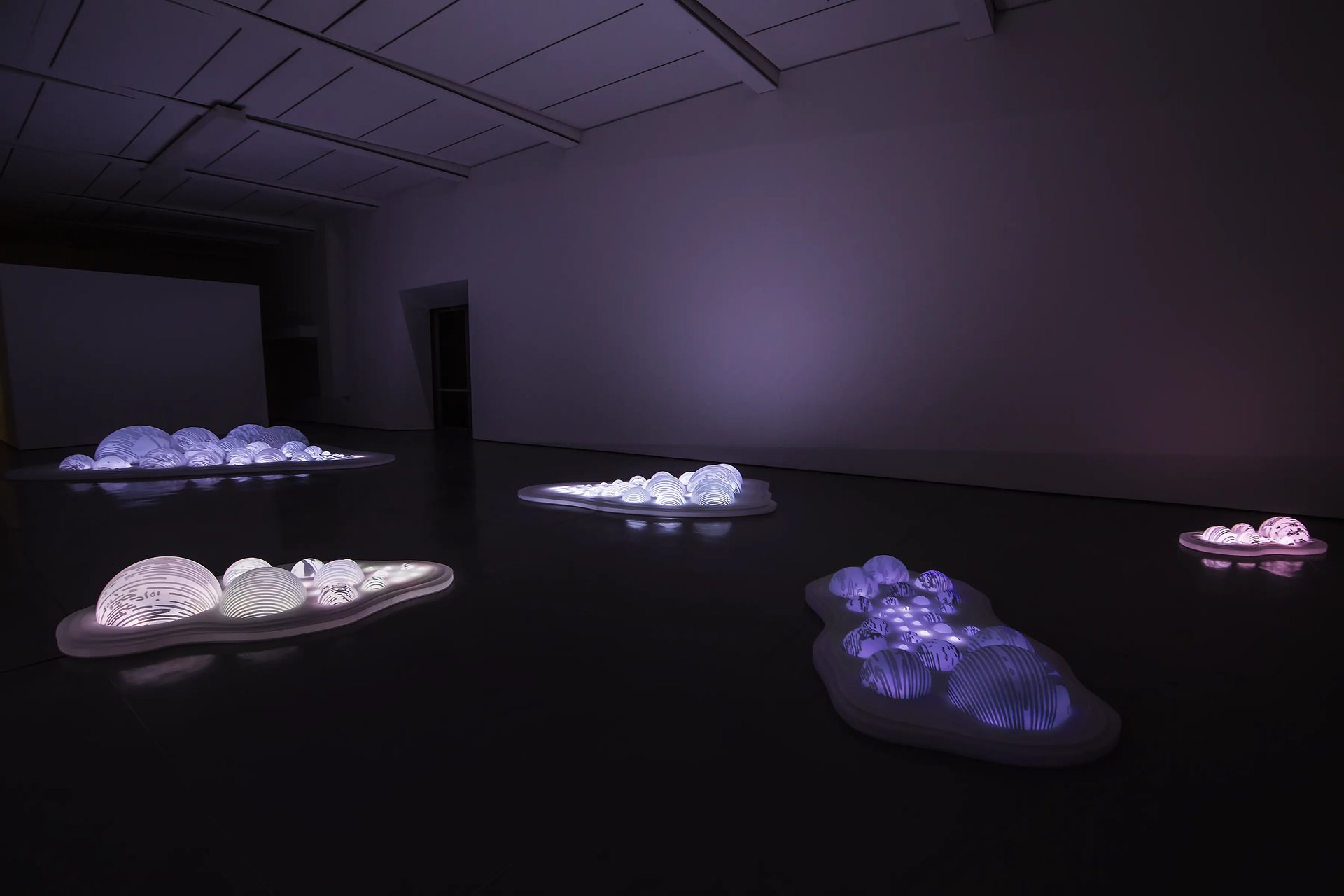ONSITE KATONAH
LIGHT BETWEEN THE ISLANDS at the Katonah Museum
Location: Katonah Museum | Katonah, NY, 2016
Media: LEDs, reflective material, custom lighting sequence, electrical hardware.
Dimensions: 34 ft x 34 ft x 11 ft 8 in
Grimanesa Amorós’ work is informed both by technology and the natural world. Although her light-based practice suggests wonders such as the aurora borealis, she transforms these spectacles into high-tech installations.
For OnSite Katonah, Amorós presents bubble-like sculptures that appear to float in the gallery. The work cites the human-made Uros Islands, which float on the waters of Lake Titicaca in her native country of Peru. For centuries the Uros people have crafted these small islands out of reeds. The bottom layers decompose while the inhabitants add reeds to the islands’ top. Therefore, bubbles take shape and keep the structures on the water’s surface. Amorós creates her islands from LED lights that shift in color to create glowing forms. Thus, the works marry the organic and technological.
OnSite Katonah presents site-specific installations created in response to the Katonah Museum of Art’s landscape, architecture, and history.










